Sneak Peak
Discover the secrets to a revitalized you with Ayurvedic detox practices! Say goodbye to fatigue and hello to boundless energy. From warm lemon water to soothing self-massage, unlock the path to a healthier, happier you. Start your journey today and embrace the glow of inner wellness!
Introduction
“Ayurvedic Detox Tips” Detoxification is fundamental in Ayurveda. It’s the removal of ama (toxins). Ayurveda is the ancient Indian system of medicine. Ayurveda sees health as a balance between body, mind, and spirit. Detoxification is key for keeping this balance. Ama is a toxic substance, according to Ayurveda. It builds up in the body due to poor digestion, bad eating habits, stress, and pollution. Over time, these toxins can build up. They cause health issues and disrupt the body’s natural harmony.
In Ayurveda, detoxification is not about cleansing the body. It’s about restoring balance and boosting health. The goal is to remove toxins and improve digestion. According to Ayurveda, health experts view digestion as the cornerstone of health. A healthy digestive system processes food well. It absorbs nutrients and eliminates waste. This prevents the buildup of ama.
There are several key benefits to regular detoxification:
1. Start Your Day with Warm Lemon Water. Ayurvedic Detox Tips
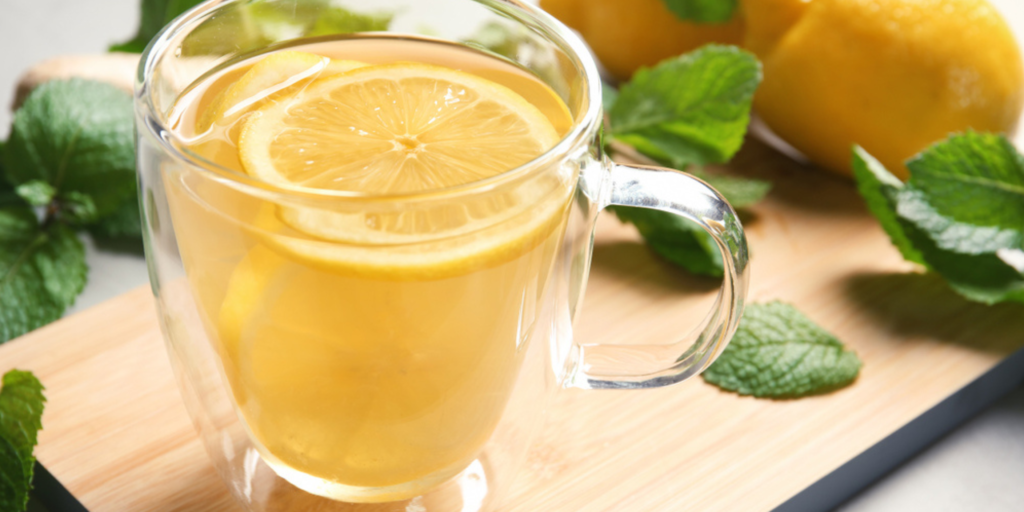
Starting your day with a glass of warm lemon water is a simple yet powerful practice in Ayurveda. It’s easy to do and offers many health benefits. Let’s explore why it’s effective and how you can incorporate this practice into your daily routine.
Why It’s Effective
Stimulates Digestion:
Warm lemon water helps kickstart your digestive system in the morning. The warm water soothes your stomach. The lemon’s acidity helps food break down. This can prevent bloating and indigestion throughout the day.
Boosts Liver Function:
Your liver is your body’s main detoxifying organ. Lemon contains citric acid, which can enhance the liver’s ability to produce bile. Bile is essential for digesting fats and removing waste from your body. Drinking warm lemon water supports this process, helping your liver work more efficiently.
Flushes Out Toxins:
Overnight, your body has worked hard to detoxify and repair itself. Drinking warm lemon water in the morning helps flush out the toxins that have built up. This can lead to better skin, increased energy, and improved health.
Hydrates the Body:
After several hours of sleep, your body is often dehydrated. Warm lemon water rehydrates you quickly, which is vital for all bodily functions. Proper hydration also helps keep skin healthy. It keeps your energy up and supports digestion.
Lemons are rich in vitamin C:
Vitamin C boosts the immune system. Starting your day with lemon water boosts your immune system a bit. It helps you stay healthy and fight off infections.
Balances pH Levels: Although lemons are acidic. But, they have an alkalizing effect on the body once eaten. Keeping your body alkaline can improve health. It also cuts the risk of chronic diseases.
Aids Weight Loss:
Drinking warm lemon water can support weight loss efforts. The pectin fiber in lemons helps you feel fuller for longer, reducing hunger cravings. Additionally, improved digestion and detoxification can boost your metabolism.
How to Prepare
Making warm lemon water is quick and easy. Here’s a simple step-by-step guide:
Choose a Fresh Lemon:
Select a ripe, fresh lemon. Organic lemons are preferable to avoid any pesticide residues.
Warm Some Water:
Heat a cup of water until it’s warm but not boiling. Boiling water can destroy some of the beneficial enzymes in the lemon juice.
Squeeze the Lemon:
Cut the lemon in half and squeeze the juice from one half into the warm water. If you prefer a milder flavor, you can start with a quarter of a lemon and adjust to taste over time.
Mix and Drink:
Stir the lemon juice into the warm water until well mixed. Drink it slowly on an empty stomach. Wait at least 15-30 minutes before eating breakfast. This gives your body time to absorb the nutrients and benefits.
Tips for Best Results
Consistency is Key: For the best results, make this a daily habit. Consistency will help you reap the long-term benefits of this simple practice.
Use fresh lemons:
Avoid bottled lemon juice. It often has preservatives and lacks the nutrients of fresh lemons.
Mind the Temperature:
Ensure the water is warm, not hot. Boiling water can break down the good compounds in lemon juice. Cold water can shock you and make digestion harder.
Rinse your mouth after drinking lemon water. Use plain water to protect your tooth enamel from the acidity.
Variations and Add-Ins
Add honey:
A teaspoon can add sweetness and extra health benefits. It soothes a sore throat and boosts energy.
Add Ginger:
A slice of fresh ginger in your warm lemon water can boost its digestive benefits. It can also add an anti-inflammatory boost.
Sprinkle Turmeric:
A bit of turmeric can reduce inflammation and add antioxidants. It will make your morning drink even better.
2. Incorporate Herbal Teas
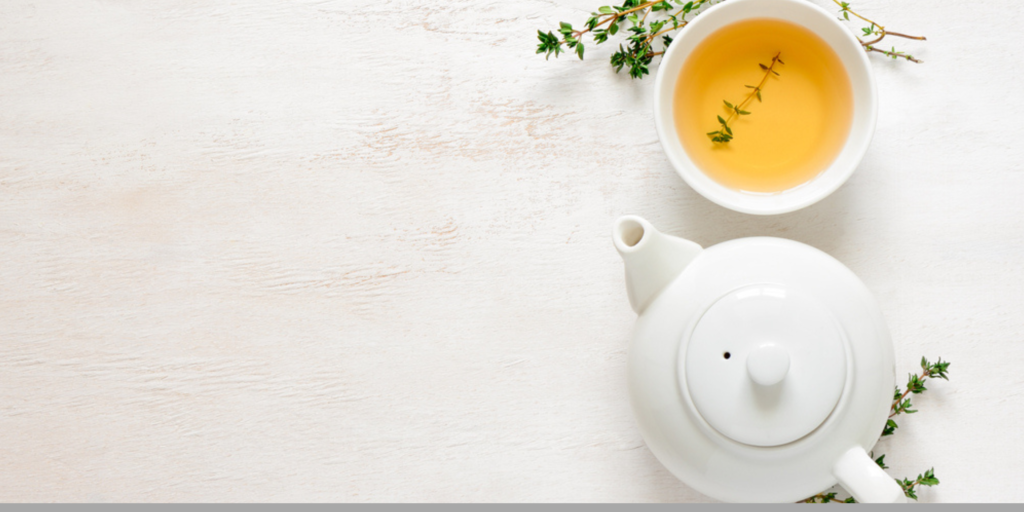
Using herbal teas in your daily routine is an easy way to support detoxification. It also improves your health. Herbal teas are full of natural ingredients. They can help cleanse your body, boost your immune system, and aid digestion. Let’s explore some detoxifying herbs and how you can make herbal teas a part of your daily life.
Detoxifying Herbs
Ginger is a powerful herb. Its ability to improve digestion and reduce inflammation is well-known. It also supports liver function. It helps stimulate the digestive system. This makes it easier for your body to break down food and take in nutrients. Also, ginger has natural anti-inflammatory properties. They can reduce pain and swelling.
Dandelion:
Dandelion is another excellent herb for detoxification. It supports liver health. It does this by promoting bile production. This helps your body break down fats and remove waste. Dandelion also makes you pee more. This can flush out toxins through urine. It keeps your kidneys and urinary tract healthy.
Tulsi (Holy Basil): Tulsi is also known as holy basil. It is an adaptogenic herb that helps the body handle stress and keep balance. It has antioxidants. They protect the body from harmful free radicals and support the liver. Tulsi also helps reduce inflammation and supports immune health.
Peppermint has soothing effects on the digestive system. It relaxes the muscles of the gut. This can relieve symptoms like bloating, gas, and indigestion. Peppermint also has anti-inflammatory properties and can help freshen your breath.
Daily Routine
Drinking herbal teas can be a joy. They can also boost your health. Add them to your daily routine. Here’s how you can incorporate these detoxifying teas into your life:
Morning Boost:
Start your day with a cup of ginger tea. Ginger tea can help wake up your digestive system and prepare it for the day ahead. Simply steep a few slices of fresh ginger in hot water for 5-10 minutes, then enjoy.
Mid-Morning Refresh:
Around mid-morning, try a cup of dandelion tea. This can help your liver. It will aid your body’s detox process all day. You can find dandelion tea bags in most health food stores. Or, you can make your own by steeping dried dandelion roots in hot water.
Afternoon Calm:
In the afternoon, tulsi tea can be very soothing. It helps combat stress and supports your immune system. You can find Tulsi tea in tea bags or loose leaf form, and you can steep it in hot water for 5-10 minutes.
Evening Relaxation:
End your day with a cup of peppermint tea. This can help relax your digestive system and prepare your body for a restful night’s sleep. Steep a few fresh or dried peppermint leaves in hot water for a refreshing and calming drink.
Tips for Making Herbal Tea
Use Fresh Ingredients:
Whenever possible, use fresh herbs to make your tea. Fresh herbs often contain more active compounds and have a better flavor.
Steep it properly:
Let your tea steep for the recommended time. This ensures you get the full benefits of the herbs. Generally, 5-10 minutes is a good range for most herbal teas.
Drinking herbal tea can also help you stay hydrated. Hydration is essential for health and detox.
Combining Teas
You can also combine different herbs to create your own detoxifying tea blends. For example, mix ginger and peppermint for a tea. It aids digestion and soothes the stomach. Or, blend dandelion and tulsi for a drink. It supports the liver and relieves stress.
Benefits of Herbal Teas
Herbal teas, like ginger and peppermint, help digestion. They do this by by stimulating digestive enzymes and relaxing the digestive tract. This makes it easier for your body to process food.
Many herbs reduce inflammation. For example, ginger and tulsi have properties that fight inflammation. They can reduce swelling and pain in the body.
Enhanced Liver Function:
Dandelion and tulsi are herbs that support liver health. They help your body detoxify better.
Stress Relief:
Tulsi and other adaptogenic herbs help your body manage stress. They also keep balance, which is crucial for health.
Better Hydration:
Herbal teas are tasty. They increase your fluid intake, keeping you hydrated and supporting bodily functions.
3. Practice Oil Pulling
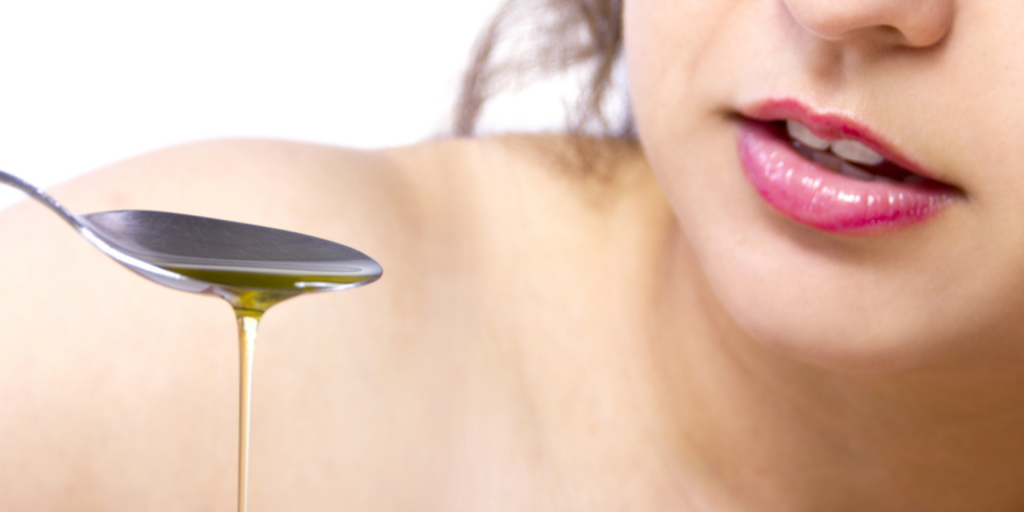
Oil pulling is an ancient Ayurvedic practice. It can remove toxins from your body and improve your oral health. This simple practice involves swishing oil in your mouth for a certain time. It can have many benefits for your teeth, gums, and overall health. Let’s dive into what oil pulling is, how to do it, and why it can be beneficial.
What is Oil Pulling?
Oil pulling is an ancient Ayurvedic technique. People have been using it for thousands of years. It involves taking a small amount of oil and swishing it in your mouth for several minutes. Oil pulling’s idea is that the oil acts like a cleanser. It draws out toxins and bacteria from your mouth and gums. This can help improve your oral hygiene and overall health.
The most commonly used oils for oil pulling are sesame oil and coconut oil. Both oils have antibacterial properties. They help reduce harmful mouth bacteria.
How to Do Oil Pulling
Practicing oil pulling is simple and doesn’t require any special equipment. Here’s a step-by-step guide to help you get started:
Choose Your Oil: Select a high-quality oil, such as sesame oil or coconut oil.
People know these oils are healthy. They can safely use them in their mouth.
Measure the Oil: Take about one tablespoon of oil. If you are new to oil pulling, you might want to start with less, like one teaspoon. Then, you can gradually work your way up.
Swish the Oil: Put the oil in your mouth and start swishing it around. Make sure to move the oil around your teeth and gums. Swish gently and avoid swallowing the oil. The goal is to pull the oil through your teeth and across your gums.
Duration: Swish the oil for 15-20 minutes. This might seem like a long time, but it’s important to allow enough time for the oil to pull out the toxins. If you can’t manage the full 15-20 minutes at first, start with 5-10 minutes. Increase the time as you get more comfortable.
Spit It Out: After swishing, spit the oil out into a trash can. Do not spit the oil into the sink, as it can clog your pipes over time. The oil will have become thicker and white as it has mixed with saliva and toxins.
Rinse Your Mouth: Rinse your mouth thoroughly with warm water. You can also use salt water for added antibacterial benefits.
Brush Your Teeth: After rinsing, brush your teeth as you normally would. This helps remove any remaining toxins and ensures your mouth is clean and fresh.
Benefits of Oil Pulling
Oil pulling offers a range of benefits for your oral health and overall well-being:
Oil pulling helps remove harmful bacteria from your mouth. This can reduce plaque, prevent cavities, and improve gum health.
Oil pulling whitens teeth:
It can remove stains from your teeth. This leads to a brighter, whiter smile.
It reduces the bacteria that cause bad breath:
Oil pulling can keep your breath fresh and pleasant.
It reduces inflammation:
Sesame and coconut oils are antibacterial. They can reduce inflammation in your gums. This can prevent gum disease and other oral health issues.
Boosts Overall Health:
Oral health is closely linked to overall health. By improving your oral hygiene. Oil pulling can help reduce the risk of systemic conditions. They include heart disease and diabetes, which poor oral health causes.
Tips for Effective Oil Pulling
Consistency is Key:
For the best results, practice oil pulling daily. Make it a part of your morning routine before eating or drinking anything.
Be Gentle:
Swish the oil gently in your mouth. There’s no need to be vigorous, as this can cause jaw discomfort.
Stay Relaxed:
Use the time to relax and do other activities. You can read, take a shower, or prepare for your day while swishing.
Use Quality Oil:
Choose organic, unrefined oils for oil pulling. High-quality oils are more effective and safer for your mouth.
Listen to Your Body:
If you feel discomfort or odd symptoms, stop oil pulling. Then, consult a healthcare professional.
You May Also Like:
10 Ayurvedic Evening Rituals for Relaxation
4. Dry Brushing
Dry brushing is simple and effective. It can help detoxify your body and improve your health. This ancient technique involves brushing your dry skin with a natural bristle brush. You brush in a specific pattern. It offers many benefits, including exfoliation, lymphatic stimulation, and improved blood circulation. Let’s explore the benefits of dry brushing and how to do it properly.
Benefits for Detoxification
Dry brushing is a powerful tool for detoxification. Here’s how it works:
Dry brushing removes dead skin cells:
It makes your skin smooth and glowing. This helps unclog pores. It lets your skin breathe better, aiding its natural detox process.
It stimulates the lymphatic system:
The system removes toxins and waste from your body. Dry brushing stimulates the lymphatic vessels. It helps them move toxins out of your body faster.
Promotes Blood Circulation:
Brushing your skin increases blood flow to the surface. Better circulation brings more oxygen and nutrients to your skin and other tissues. This promotes overall health and vitality.
It reduces cellulite.:
Regular dry brushing breaks down fat under the skin. This reduces the appearance of cellulite. While it’s not a miracle cure, it can make a noticeable difference over time.
Boosts Energy Levels:
Many people find that dry brushing has an invigorating effect. It can give you an energy boost by increasing blood flow and stimulating the nervous system. This makes it a great addition to your morning routine.
Technique: How to Do Dry Brushing
Dry brushing is easy to do and doesn’t take much time. Here’s a step-by-step guide to help you get started:
Choose the Right Brush:
Use a natural bristle brush with a long handle to reach all areas of your body. The bristles should be firm but not too harsh on your skin. You can find these brushes at health stores or online.
Prepare Your Skin:
Make sure your skin is completely dry before you start. You typically dry brush before showering. Then, you can wash away the dead skin cells.
Start at Your Feet:
Begin by brushing the soles of your feet and then move up to your ankles. Use long, sweeping motions and brush towards your heart. This helps promote the flow of lymph and blood back to your core.
Brush Up Your Legs:
Continue brushing up your legs. Start at your ankles and go to your knees. Then, go from your knees to your thighs. Always brush towards your heart.
Brush Your Torso:
Move to your abdomen and lower back, brushing in a circular motion. For your chest and upper back, use gentle strokes towards your heart. Be careful around sensitive areas like the breasts.
Brush Your Arms:
Start at your hands and brush up your arms towards your shoulders. Use the same long, sweeping motions.
Brush Your Neck and Shoulders:
Finish by brushing your neck and shoulders. Use upward strokes on your neck and downward strokes from your shoulders to your chest.
Be Gentle:
Use gentle pressure when brushing. Your skin should be slightly pink afterward but not red or irritated. If your skin feels sore, use less pressure next time.
Shower and Moisturize:
After brushing, take a shower to rinse off the dead skin cells and toxins. Follow up with a natural moisturizer like coconut oil or aloe vera to hydrate your skin.
Frequency:
Dry brush your skin 2-3 times a week for best results. You can adjust the frequency based on how your skin responds.
Tips for Effective Dry Brushing
Consistency:
For optimal benefits, make dry brushing a regular part of your routine. Consistency is key to seeing improvements in your skin and overall health.
Drink plenty of water throughout the day:
It will help flush out toxins and support your lymphatic system.
Clean Your Brush:
Regularly clean your brush to keep it free from bacteria and dead skin cells. Wash it with mild soap and water, and let it dry completely before using it again.
Listen to Your Body:
If you have sensitive skin or any skin conditions, ask a doctor before you start dry brushing. Adjust the pressure and frequency based on how your skin feels.
5. Incorporate Detoxifying Foods
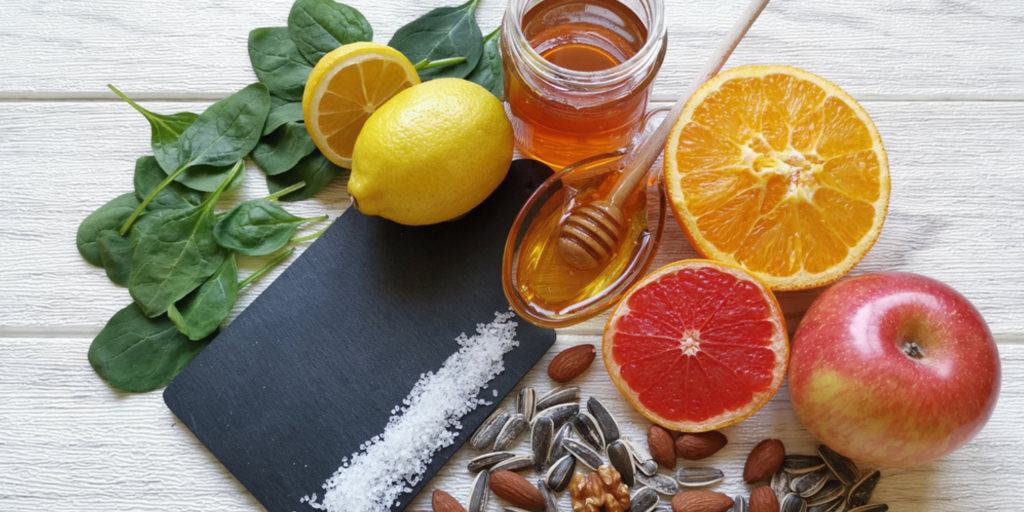
You can easily add detoxifying foods to your diet. They help your body remove toxins and improve health. Certain foods have powerful properties. They support the liver, kidneys, and digestive system, which are essential for detoxification. Let’s delve into some top detoxifying foods and simple meal ideas to include them in your daily diet.
Top Detoxifying Foods
Leafy Greens (Spinach, Kale)
Leafy greens are full of vitamins, minerals, and antioxidants. They help cleanse the body. Spinach and kale are great sources of chlorophyll. It helps remove toxins from the blood and supports liver function. Ayurvedic Detox Tips
Turmeric
Turmeric is a potent anti-inflammatory spice known for its detoxifying properties. It contains curcumin. Curcumin helps make the body produce bile. Bile is vital for digesting and absorbing fats and removing toxins.
Garlic
Garlic is famous for boosting the immune system. It also supports liver detox. It contains sulfur compounds that activate liver enzymes responsible for flushing out toxins.
Ginger
Ginger aids digestion and stimulates circulation, making it a powerful detoxifier. It helps break down the buildup of toxins in the body. It also promotes the removal of waste.
Beets
Beets contain antioxidants, vitamins, and minerals. They support liver detoxification and help cleanse the blood. Betalains in beets help repair and regrow liver cells. The liver is the body’s main detox organ.
Cilantro
Cilantro is famous for binding with heavy metals in the body and aiding in their elimination. It is also full of antioxidants. It supports the liver in its detoxification.
Meal Ideas
Incorporating these detoxifying foods into your meals can be simple and delicious. Here are a few easy meal ideas. They will help you enjoy the power of these ingredients.
Green Smoothie
Start your day with a nutrient-packed green smoothie. Mix a handful of spinach and a small piece of fresh ginger. Add half a banana, a cup of water or almond milk, and a pinch of turmeric. This refreshing smoothie is not only tasty but also a great way to kickstart your detox process.
Garlic and Ginger Stir-Fry
For a quick and healthy lunch or dinner, make a garlic and ginger stir-fry. Sauté chopped garlic and grated ginger in a bit of olive oil. Add in your favorite vegetables, such as broccoli, bell peppers, and carrots. Toss in some tofu or chicken for protein and season with a splash of soy sauce or tamari. Serve over brown rice or quinoa for a complete meal.
Beet and Kale Salad
A beet and kale salad is a perfect detoxifying dish. Massage kale leaves with a bit of olive oil and lemon juice to soften them. Add shredded raw beets, sliced avocado, and a sprinkle of sunflower seeds. Dress with a simple vinaigrette made from olive oil, apple cider vinegar, and a touch of honey. This vibrant salad is not only delicious but also packed with detoxifying nutrients.
Turmeric Lentil Soup
Turmeric lentil soup is a warm and comforting meal that supports detoxification. In a large pot, sauté onions, garlic, and ginger in olive oil. Add in a teaspoon of turmeric and stir. Then, add red lentils, diced tomatoes, and vegetable broth. Let it simmer until the lentils are cooked through. Season with salt, pepper, and a squeeze of lemon juice before serving.
Cilantro Pesto
Cilantro pesto is a versatile sauce that can be used in various dishes. Blend a bunch of fresh cilantro with garlic, lemon juice, olive oil, and a handful of nuts (like almonds or cashews). Use this pesto as a topping for grilled fish, as a spread on sandwiches, or stirred into pasta. It’s a flavorful way to incorporate the detoxifying benefits of cilantro into your meals.
Detoxifying Herbal Tea
Complement your meals with a detoxifying herbal tea. Soak fresh ginger slices, a teaspoon of turmeric, and a handful of fresh cilantro in hot water for a few minutes. Strain and enjoy this warming drink after your meals. It helps digestion and detoxification.
6. Practice Abhyanga (Self-Massage)
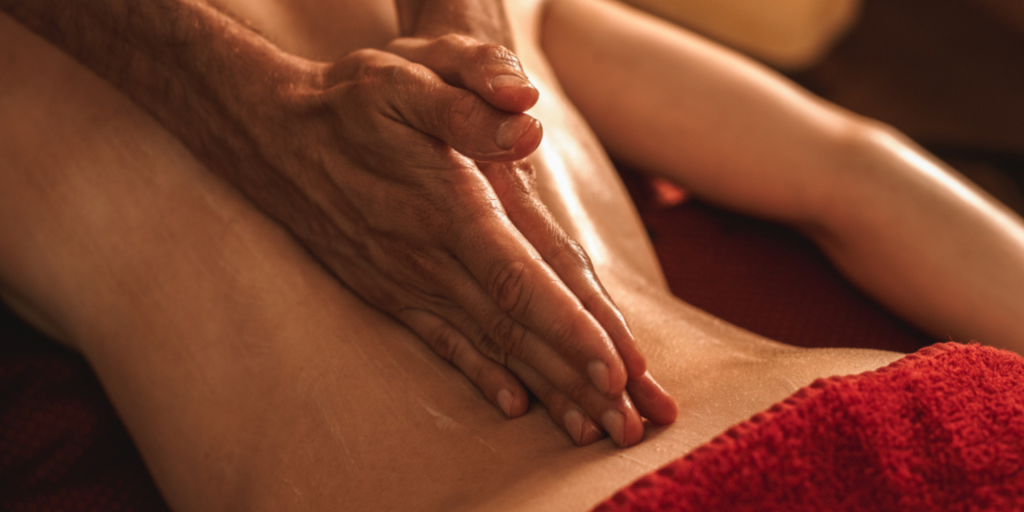
Abhyanga is self-massage. It is soothing and rejuvenating. The practice is rooted in Ayurveda, the ancient Indian system of medicine. This practice involves massaging warm oil into the skin. It nourishes the tissues, promotes relaxation, and supports well-being. Let’s explore the benefits of Abhyanga for detoxification. We’ll also learn how to add it to your daily routine.
Benefits for Detoxification
Abhyanga promotes circulation. It helps blood flow to the skin. This flow helps remove toxins through the pores. The gentle massage strokes encourage lymphatic drainage. This allows toxins to be flushed out of the body more effectively.
Abhyanga’s rhythmic movements calm the nervous system. They reduce stress and promote relaxation. By lowering stress, Abhyanga indirectly supports detoxification. It stops the buildup of stress-related toxins in the body.
Abhyanga’s oils hydrate and protect the skin. They boost its ability to remove toxins and stay healthy. Massage also improves skin tone and texture. It leaves you with radiant skin.
How to Perform Abhyanga
Choose Your Oil:
Pick a high-quality oil. Examples are sesame, coconut, or almond oil. Use it for your Abhyanga practice. Warm the oil slightly by placing the bottle in a bowl of hot water for a few minutes.
Prepare your space:
Find a warm, quiet place. Do your massage without any distractions. Lay out a towel or old sheet to protect your clothing and surfaces from oil stains.
Start at the scalp:
Pour a little oil on your fingertips. Massage it into your scalp with circular motions. Continue massaging the oil into your hair and scalp for a few minutes. This allows the oil’s nourishing properties to enter the hair follicles. They then soothe the scalp.
Move to the Face:
Gently massage the oil onto your face using upward strokes. Pay special attention to places that tend to be dry or tense. These include the forehead, temples, and jawline. Be careful to avoid getting oil in your eyes.
Massage the Body:
Pour more oil onto your hands and rub it onto your body using long, sweeping strokes. Do circular motions on your joints. Use firmer pressure on areas of tension, such as the shoulders, lower back, and thighs.
Focus on the Feet:
Spend extra time massaging the oil into your feet. Get the soles and between the toes well. The feet have many reflex points. They correspond to various organs and systems in the body. Foot massage is especially good for health and detox.
Allow the oil to absorb:
After your massage, let it sink into your skin for 15-20 minutes. This allows the oil’s nourishing properties to soak in deep and hydrate the tissues.
Shower:
Take a warm shower to rinse off any excess oil. Use a gentle soap or body wash to remove the oil without stripping the skin of its natural moisture.
Repeat Regularly:
Aim to practice Abhyanga daily for most benefits. If daily massage isn’t possible, try to add it to your routine at least 3-4 times a week. Doing this lets you feel the detoxifying effects over time.
7. Drink Plenty of Warm Water
Water is key. It supports your body’s natural detox processes and overall health. Drink lots of water throughout the day. It helps flush out toxins and aids digestion. It keeps your body working well. Let’s explore the importance of hydration. We’ll also look at the benefits of drinking warm water for detoxification.
Importance of Hydration
Water flushes out toxins:
It’s crucial for removing them from the body in urine and sweat. Ensuring that you stay hydrated helps your body flush out toxins quickly. This prevents their buildup and harm to your health.
Water supports bodily functions:
Every cell, tissue, and organ in your body needs it to work well. It’s essential to stay hydrated. Many bodily functions require hydration. These include temperature regulation, and nutrient and oxygen transport.
Drinking water helps keep your body’s fluid balanced:
This balance is vital for many body processes. It includes blood flow, digestion, and waste removal.
Proper hydration keeps your skin hydrated and supple:
It reduces the risk of dryness, irritation, and premature aging. Drinking enough water can also help clear toxins from the skin. This promotes a clear and radiant complexion.
Warm Water Benefits
Eases Digestion:
Drinking warm water can help relax the digestive system. It makes it easier to digest food and absorb nutrients. Warm water stimulates the digestive tract, promoting regular bowel movements and preventing constipation.
Dissolves Toxins:
Warm water can help dissolve toxins from the body. It can flush out ones that have built up better than cold water. The warm water helps loosen toxins. It encourages their removal in urine and sweat.
Improves Circulation:
Drinking warm water can boost blood flow. This is key for carrying oxygen and nutrients to cells and removing waste. Improved circulation supports overall detoxification and enhances vitality.
Tips for Drinking Warm Water
Start Your Day Right:
Start your day with a glass of warm water and lemon. It will kickstart your metabolism and help detox your body.
Stay Consistent:
Aim to drink at least 8-10 cups of warm water throughout the day, spacing your intake evenly to stay hydrated.
Listen to Your Body:
Pay attention to your body’s thirst cues and drink water whenever you feel thirsty. Also, monitor your urine’s color. Pale yellow means proper hydration. Dark yellow may signal dehydration.
Infuse with Herbs:
Make warm water better at detoxifying by adding detoxifying herbs. These include ginger, mint, and cilantro. Simply steep the herbs in hot water for a few minutes before drinking.
- Drink water before, during, and after exercise. This will replace fluids lost through sweat and support muscles. Opt for warm water during colder weather to help maintain body temperature.
8. Engage in Regular Physical Activity

Exercise is vital for health and fitness. It also crucially aids the body’s natural detoxification. Exercise enhances blood flow. It also aids digestion and the removal of toxins through sweat. Let’s explore the importance of exercise for detox. We’ll also discover Ayurvedic recommendations for different body types.
Exercise and Detoxification
Enhanced Blood Circulation:
Exercise increases heart rate and improves blood flow throughout the body. This enhanced circulation helps deliver oxygen and nutrients to cells. It also removes waste and toxins, promoting detoxification.
Improved Digestion:
Exercise stimulates the digestive system. It helps to improve nutrient absorption and waste removal. Regular exercise can ease common digestive issues. These include bloating, constipation, and gas. Exercise supports a healthy gut and efficient detoxification.
Promotion of Sweating:
Sweating is a natural process. It helps the body remove toxins, like heavy metals and pollutants. Moving makes you hot. This causes sweating and lets toxins out through the skin.
Ayurvedic Recommendations
Ayurveda is the traditional Indian system of medicine. It tailors physical activity to body types. Doshas are the names of these types. Here are some Ayurvedic recommendations for exercise based on dosha:
Vata Dosha:
Vata types tend to have a delicate constitution. They may enjoy gentle, grounding exercises like yoga or walking. These activities help calm the nervous system, improve circulation, and promote relaxation.
Pitta Dosha:
Individuals with Pitta types have strong digestion and a fiery disposition. Swimming and cycling are great for pitta individuals. They provide a full-body workout and keep the body cool and balanced.
Kapha Dosha:
Kapha types are often sluggish. They may benefit from more vigorous activities. These activities boost metabolism and circulation. Jogging, running, or doing aerobic exercises can invigorate kapha people. They also help detoxify them.
Tips for Incorporating Exercise
Set Realistic Goals: Start with doable exercise goals. Then, increase their intensity and duration over time. Aim for at least 30 minutes of moderate-intensity exercise most days of the week.
Find Activities You Enjoy:
Choose activities that you find enjoyable and sustainable in the long term. You can add fun to your workout by dancing, hiking, or playing a sport. This can increase motivation and adherence.
Conclusion
Adding Ayurvedic detox practices to your routine can greatly affect your health. They can boost your energy and well-being. Embrace these proven methods. They support your body’s natural detox. They bring a renewed sense of vitality. Let’s summarize the benefits. We’ll also offer encouragement to start using these practices in your life.
Summary of Benefits
Improved Health:
Ayurvedic detox practices help remove toxins from the body. This supports better digestion, improved immune function, and overall health.
Increased Energy Levels:
These practices eliminate toxins and promote nutrient absorption. They boost energy and vitality, helping you feel vibrant and alive.
Enhanced Well-being:
Detoxifying the body can help mental and emotional well-being. It can bring clarity, lower stress, and create balance.
Clearer Skin:
Many toxins leave the body through the skin. Detoxing can lead to clearer, healthier skin with a natural glow.
Encouragement to Start
Starting your journey towards Ayurvedic detoxification doesn’t have to be overwhelming. Start with one or two practices you like. Then, add more over time. Consistency is key to getting the full benefits. So, commit to making these practices part of your daily routine.
Remember, tiny changes can lead to big results. So, don’t feel pressured to overhaul your whole life at once. You might start by drinking warm lemon water in the morning. Or, you might try self-massage before bed. Every step you take to detox is a step to a healthier, more balanced life.
So, why wait? Start today and take control of your health and well-being. Embrace the wisdom of Ayurveda and embark on a journey towards a happier, healthier you. Your body will thank you for it.









